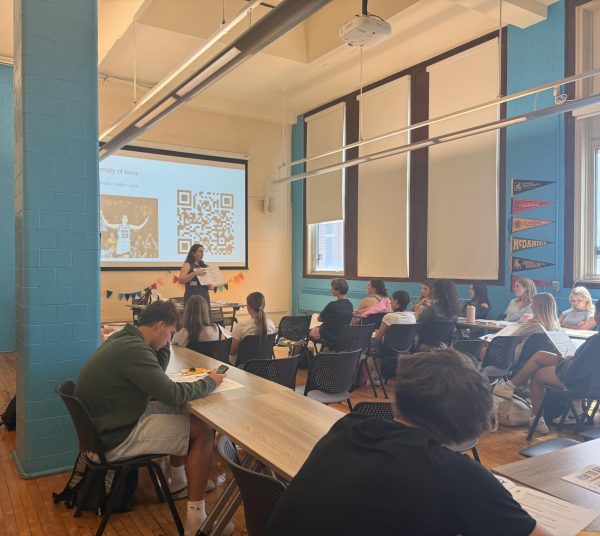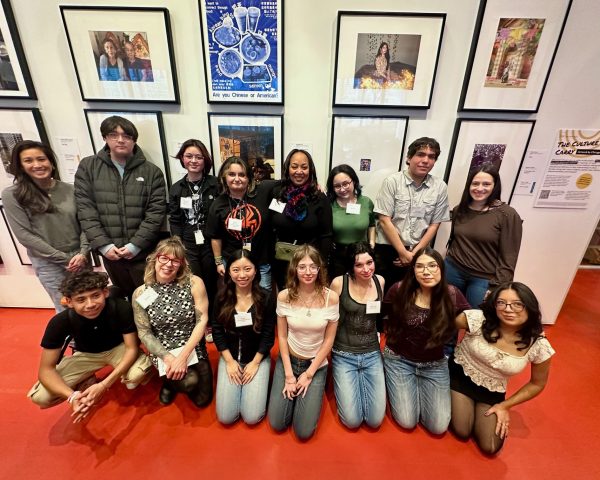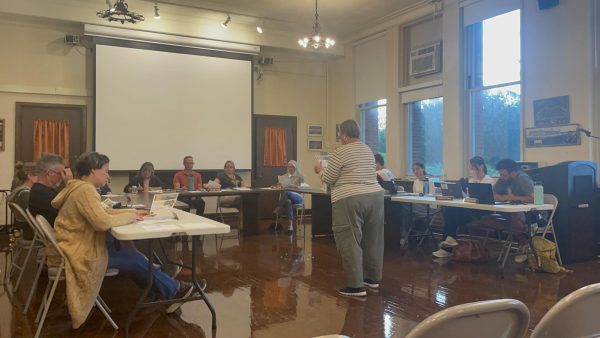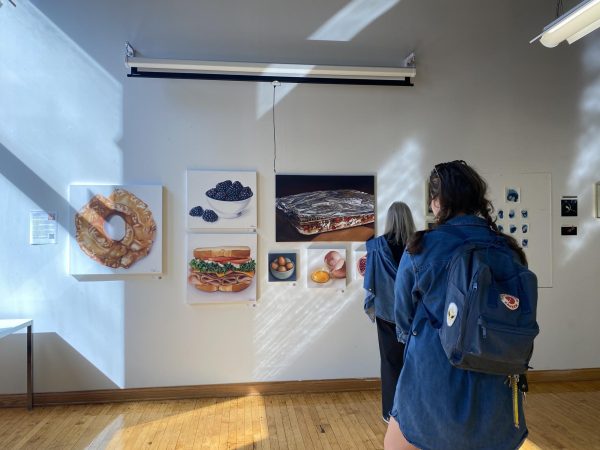TOMODACHI initiative brings six Japanese students to Lane
The six Japanese exchange students shadowed six mentors from Lane’s Japanese classes on Sept. 7. (Photo Courtesy of Ms. Nakagawa)
Walking into Lane can be daunting, even for the average freshman. The size and population alone requires a massive adjustment.Imagine being a new student from somewhere other than the United States and having to walk through the hallways as seniors roar “one-eight”.
This was the case when six students from Tagajo High School in the Miyagi Prefecture of Japan took part in an exchange student program through the TOMODACHI initiative and visited Lane on Sept. 8.
This initiative is operated by the US-Japan Council and by the U.S. Embassy in Tokyo. The Japanese American Society of Chicago (JASC) hosted the students during their entire stay in the city from Sept. 3-9, according to the TOMODACHI program.
The six exchange students were given the opportunity to shadow Lane students that were enrolled in Japanese as their world language course for the 2017-2018 school year.
One of the students who volunteered to help host the exchange students was senior Joanna Klepaczko, Div. 852. Klepaczko is currently taking AP Japanese.
“I wanted to see how they would react to an American school,” Klepaczko said.
Klepaczko, who also takes philosophy and photography, was able to showcase some of the electives that Lane has to offer.
The senior rules meeting was another event that the visiting students had the chance to experience. Klepaczko said she was glad she was able to attend the meeting with the student that shadowed her because of the senior chant that was started after the meeting concluded.
“During the day, we had the senior meeting so she got to experience the school’s spirit,” Klepaczko said. “She got to experience the school schedule and also some fun in the classroom.”
Klepaczko said that communication throughout the day wasn’t a huge issue because of her knowledge of Japanese. Whenever she and her assigned student weren’t on the same page, they used hand gestures to figure out what they wanted to say.
There is definitely a stark contrast between the way daily activities operate in Japanese high schools and those here in Chicago, according to the exchange students.
Ericka Corral, Div. 877, also volunteered to be shadowed. She said she learned about the differences between everything from school lunches to class sizes in Japan.
“They liked to talk about how big everything was here,” Corral said. “They felt like in Japan everything was so small and constricted and here, everything is open and very loud.”
As of now, there are about 840 students currently enrolled at Tagajo, according to the school’s website. This is small in comparison to Lane, which has a current enrollment of 4,429 students.
The Lane students said that a big difference the exchange students noticed was the difference in school lunches. At Tagajo they are not free, but are served much fresher and of a higher quality than CPS lunches.
Tagajo also features different activities than Lane does. The exchange students gave a presentation to the Japanese class, about the various activities at their school. Isabel Frueh, Div. 956, was another volunteer from Lane. She said that during the presentation, one activity stood out.
“They have one, big field day type thing where they all do sports with the whole school,” Frueh said.
This field day is also called Sports Day in Japan. At most Japanese public schools, the entire school makes T-shirts for their teams or classes and compete against one another in different events on this day.
While in Chicago, the six exchange students had the opportunity to explore other aspects outside of Lane. They visited the University of Chicago and the Art Institute.
The TOMODACHI initiative promotional flier explains one of the purposes of the visit to Lane was for the students involved to have a chance to build connections and possibly lifelong relationships. So far, the Lane students have continued to stay in touch now that the exchange students have returned to Japan.
They communicate using several social media outlets which are more popular in Japan than in America. Two of the apps that Klepaczko said they use are Line and Snow. Line is a messaging app, and Snow is a social media app similar to Snapchat.
There are now plans being explored to allow students from Lane to possibly visit a high school in Japan in a similar exchange. Ms. Nakagawa, the Japanese teacher at Lane who helped organize the shadowing event, said that the trip could occur next spring or summer.
This was the very first time this initiative has been run, and Nakagawa explained that she hopes for the program to continue as much as the budget from the Japanese government will allow. She was also glad that Lane had been chosen as the school to host the event.
“This is the first time for that organization so they picked us, luckily enough they picked us,” Nakagawa said.
Your donations directly fund the Lane Tech student journalism program—covering essential costs like website hosting and technology not supported by our school or district. Your generosity empowers our student reporters to investigate, write, and publish impactful stories that matter to our school community.
This website is more than a publishing platform—it's an archive, a research tool, and a source of truth. Every dollar helps us preserve and grow this resource so future students can learn from and build on the work being done today.
Thank you for supporting the next generation of journalists at Lane Tech College Prep!

I am a senior and a Journalism 2 student here at Lane. I have a strong interest in sports journalism, but have branched out to stories with a variety of...









